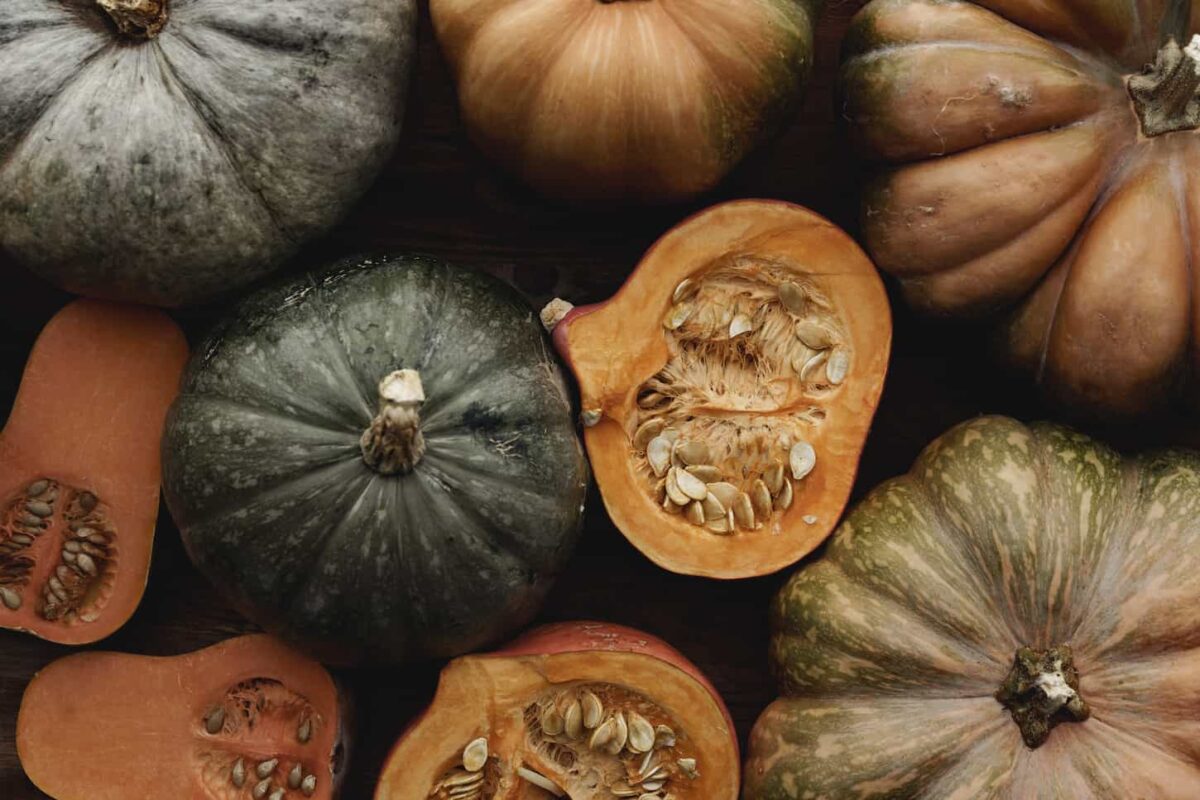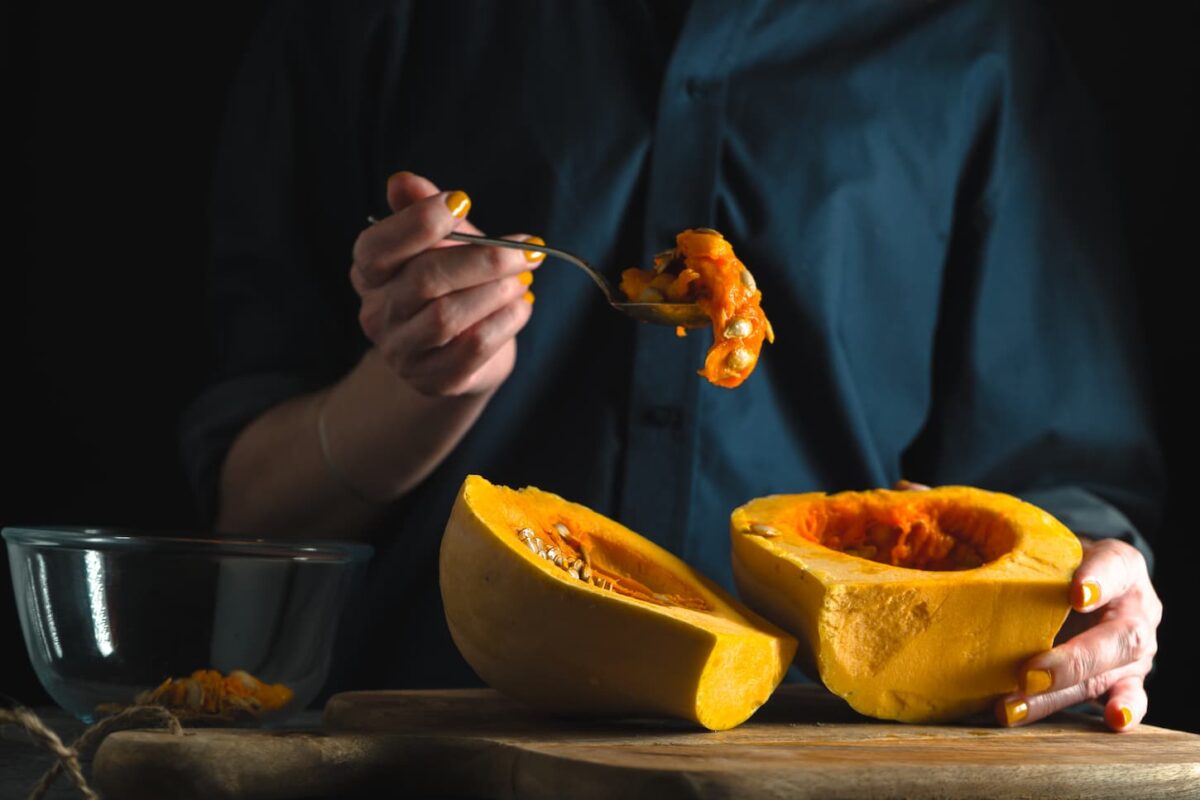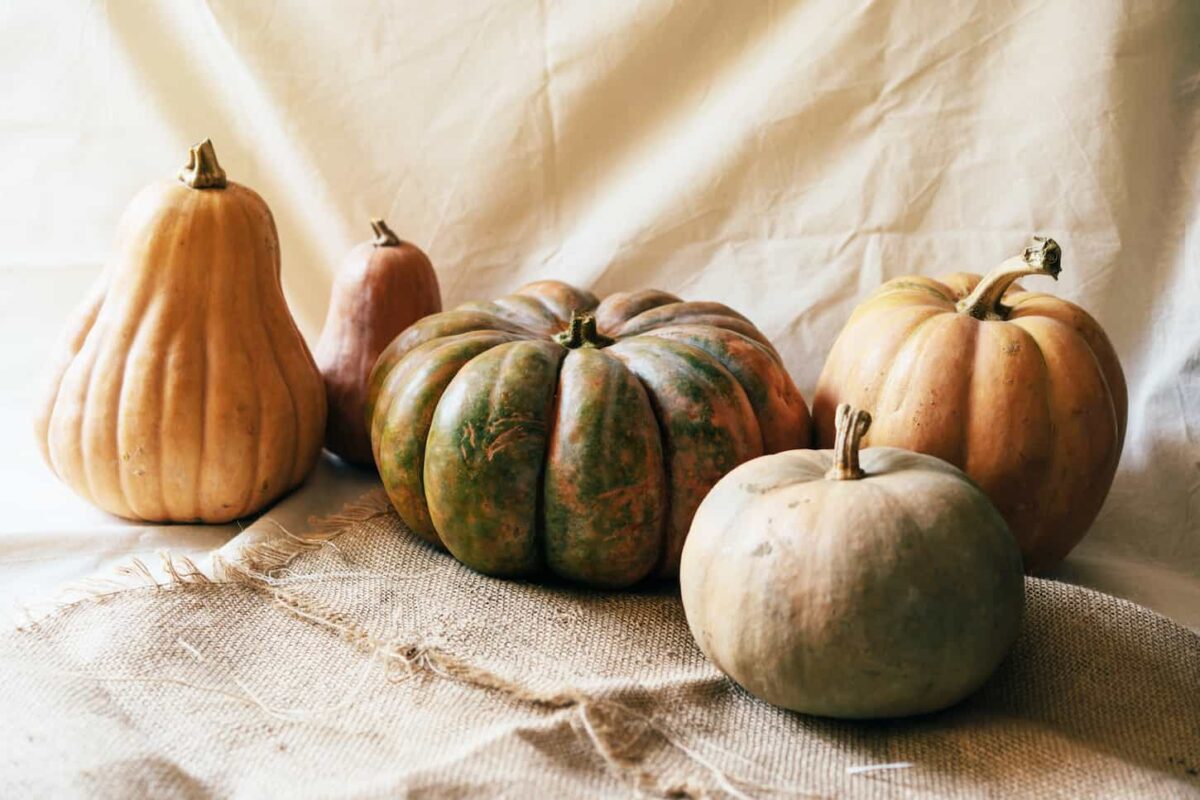Pumpkins are incredibly versatile produce – not only can we cook almost anything with them, but we can also use their seeds as a snack and the body as a decoration. Though their definition is elusive, many still ask whether pumpkins are berries.
Pumpkins are berries, gourds, melons, and fruit simultaneously. They fit the physical and botanical description of a berry and a melon but are taxonomically classified as a gourd. Since they start from a flower, they are overall considered a fruit.
To be perfectly honest – their classification is a bit of a conundrum, so read on to get a detailed explanation of why pumpkins belong in every group simultaneously. It’s crazy cool.

What Is a Pumpkin Classified as Botanically?
Botanically, the term pumpkin is used to describe many different species in the Cucurbita genus, but there is no strict definition of what a pumpkin is. This is why it is often referred to as squash, as that’s how it’s used in cooking (culinary use).
The term’s meaning can be assigned individually, meaning that we can call any species within the genus a pumpkin, and we wouldn’t be wrong…technically.
However, the most common species referred to as pumpkins are the Cucurbita Pepo pumpkins. This species has many different cultivars, including the run-of-the-mill pumpkin, zucchini, and summer squash.
Fun fact: Cucurbita Pepo is the oldest domesticated species (source: Economic Botany).
What Type of Fruit is a Pumpkin?
A species can be both a fruit and a berry. Pumpkin is exactly that – it is both a fruit and a berry. Why? Botanically, it is an herbaceous fruit, but also fits the definition of a berry.
Let’s delve deeper down and define precisely what pumpkins are.
Is pumpkin a berry or fruit?
The pumpkin has seeds (which are tasty if someone knows how to prepare them), pulp, and three layers (with a thin endocarp layer, which defines berries). So, by that definition, a pumpkin is a berry and a fruit.
However, nobody uses the term “berry” to define a pumpkin, as it semantically falls into the squash category.
Are pumpkins berries or gourds?
Pumpkins are both berries and gourds. They come from the Cucurbitaceae family, the family of gourds, but they can also be described as berries, although nobody uses that definition.
So, from a botanical standpoint, pumpkins are gourds, but they also meet the description of berries.
Are pumpkins melons or berries?
Pumpkins are both melons and berries. Melons are various non-defined fruits within the Cucurbitaceae family, while they also fit the berry description. Therefore, they can be called both melons and berries.
However, nobody really thinks that pumpkins are melons – they can only be called that because of a lack of botanical definition.
Why Are Pumpkins Considered Berries?
A berry is a fleshy fruit with many seeds that derive from a single ovary of an individual flower. By that definition, a pumpkin is a berry.
What we need to understand, though, is that a berry doesn’t have a place in scientific classification. Most berry species come from different genera and families.
The term itself is used to describe a specific type of fruit, but there is no specific “berry” clade in scientific nomenclature.
Why Are Pumpkins Not Gourds?
Like the term “pumpkin,” the term “gourd” is assigned to different species within different genera in the Cucurbitaceae family. We can use the term “gourd” to describe a pumpkin, but it would be slightly odd.
The Lagenaria genus is a major difference between what’s traditionally considered a pumpkin and a gourd. There are no pumpkins in the Lagenaria genus, only gourds.

What Are Pumpkins Classified as Culinarily?
In cooking, pumpkins are classified as vegetables. Unlike biology, the specific definition of whether a pumpkin is a gourd or a berry is not important in cooking.
Pumpkins are very versatile in cooking – we can use them for almost anything, which is why chefs love them.
The first example of this that comes to mind is pumpkin soup, which is very creamy. It’s unclear where it originated, as several cultures developed similar recipes around the same time.
Another popular food is roasted pumpkin seeds, especially when they’re salted. This is also good for Halloween pumpkins, so don’t throw them away when November comes.
Lastly, let’s not forget the classic pumpkin pie – the perfect fall dessert!
Can You Eat Raw Pumpkin?
While eating the pumpkin itself may be safe, the seeds can be carriers of Salmonella or Escherichia coli. This is not true for every pumpkin, but since there is no way to know beforehand, we do not suggest eating raw pumpkin.
People can develop severe food poisoning if these bacteria are in their system!
Even if we take the seeds out and dry them, the bacteria can still remain in them and cause an illness.
On the other hand, the pumpkin’s flesh isn’t dangerous to eat, but it’s not nearly as tasty as a cooked pumpkin. Raw pumpkin isn’t comfortable to chew because of its harsh texture – it’s full of fiber, which is healthy but difficult to process. Goats love it, though!
When it comes to flavor, the news isn’t much better either – raw pumpkin is usually bitter, or we’d make much better use of it if we cooked it.
Seeds are also difficult to eat (on top of being unsafe), so it’s always recommended to roast them in an oven.
Best Pumpkin Varieties to Grow
Like any fruit and vegetable, the pumpkin has many different variations. The best variety to grow depends on the needed purpose of the pumpkin. Here are the best varieties to grow for different purposes.
Best tasting and looking pumpkins
Let’s start with Cherokee Bush – this is the classic orange pumpkin we see on porches at the end of October. They have plenty of flesh, so we can use them for more or less any recipe (especially soups and pies), but keep in mind that they can grow to massive sizes.
A Cherokee Bush can weigh up to eight pounds, so we’ll need some space in the garden if we want to grow them.
Fairytale pumpkins are another tasty variety, weighing up to fifteen pounds and giving us plenty of flesh to work with.
Additionally, if we’re particularly dedicated to Halloween, we’ll appreciate their shape – they’re called Fairytale pumpkins because they’re shaped the way they were drawn in classic Disney cartoons!
Best pumpkins to grow for size (biggest pumpkins)
Dill’s Atlantic Giant variety is currently recognized as the biggest pumpkin variety in the world. They can weigh more than 1,000 pounds, so they’re a good choice if we want to enter a giant pumpkin competition.

This makes Dill’s Atlantic Giant pumpkins the biggest fruit in the world!
Another good choice is the Big Moon variety, which can weigh over two hundred pounds. Both varieties can grow at an insane rate and gain several pounds per day.
Easiest to grow pumpkins
Cherokee Bush, Jack-Be-Little, and Fairytale varieties are all fairly easy to grow. It takes them between 90 and 130 days to reach maturity, with the Jack-Be-Little variety being the quickest.
Pumpkins are generally easy to grow and don’t require any special care. The only pumpkins that are difficult to grow are the giant pumpkins for pumpkin competitions.
Fastest to grow pumpkins (great for short growing seasons)
The Jack-Be-Little pumpkin is the quickest-growing in the world, as it can mature in 85 days (in some instances), which is a record time. The nominal time for maturity is 95 days, which is still much quicker than any other pumpkin variety.
Best to grow in extreme weather/temperatures
Unfortunately, pumpkins don’t handle cold temperatures well. If the temperature drops below 60°F, the frost will kill your pumpkins, and no variety can grow in low temperatures.
No pumpkin variety is particularly tolerant of hot temperatures – all varieties are successful in moderate heat. However, temperatures above 80°F can burn the leaves and harm your plant.
Growing up in Arizona, we couldn’t successfully grow pumpkins. We can grow them here in Utah, but our gardening season is short. So we either have to pick faster-growing options or go for the transplant route with slower-growing varieties.
Verdict – Pumpkins are Squash (and berries)
Pumpkins are a type of fruit of the gourd family that fits the description of a berry and a melon. Therefore, calling it a berry, a melon, a gourd, or a fruit is not wrong. Most people refer to pumpkins as squash, as that’s how they’re used culinarily, even if they aren’t a botanical vegetable.
They’re a very useful fruit at that, as we can eat almost every part of the pumpkin and use that which we don’t eat to scare the neighbors on Halloween!
Next Steps
I’m glad it’s not my job to sort the various genus and species of plants (or animals!). There’s a lot of overlap, a gray area, and it all changes when we add the botanical versus culinary use debate.
In any case, pumpkins are amazing.
If you’re growing your own pumpkins, consider saving those seeds for later – and read our article answering this important question: Can You Freeze-Dry Seeds? next!
Resources
Learning from your own experience is essential, but learning from others is also intelligent. These are the sources used in this article and our research to be more informed as homesteaders.
- Encyclopædia Britannica, inc. (2022, December 19). Berry. Encyclopædia Britannica. Retrieved February 3, 2023, from https://www.britannica.com/science/berry-plant-reproductive-body
- Keller SE;Anderson NM;Wang C;Burbick SJ;Hildebrandt IM;Gonsalves LJ;Suehr QJ;Farakos SMS; (n.d.). Survival of salmonella during the production of partially sprouted pumpkin, sunflower, and Chia seeds dried for direct consumption. Journal of food protection. Retrieved February 3, 2023, from https://pubmed.ncbi.nlm.nih.gov/29513105/
- Nee, M. (n.d.). The domestication of Cucurbita (Cucurbitaceae) – economic botany. SpringerLink. Retrieved February 3, 2023, from https://link.springer.com/article/10.1007/BF02860475
- Russ, A. K., Russ, K., Keinath, A. P., & Polomski, R. F. (2023, January 24). Pumpkins & winter squash. Home & Garden Information Center | Clemson University, South Carolina. Retrieved February 3, 2023, from https://hgic.clemson.edu/factsheet/pumpkins-winter-squash/
